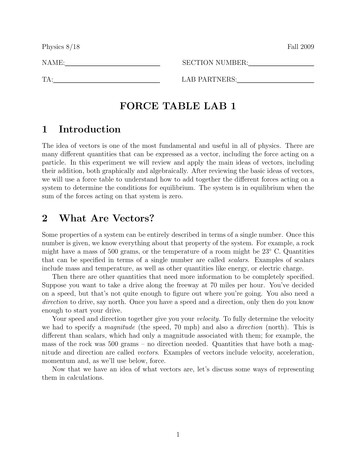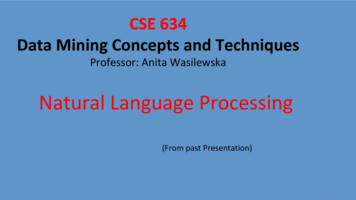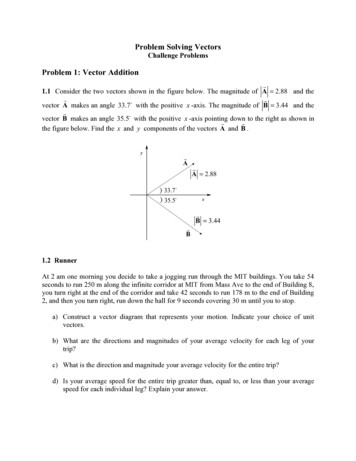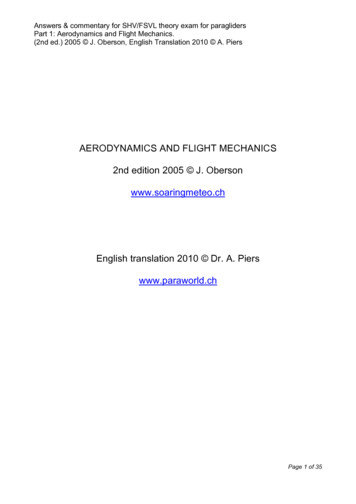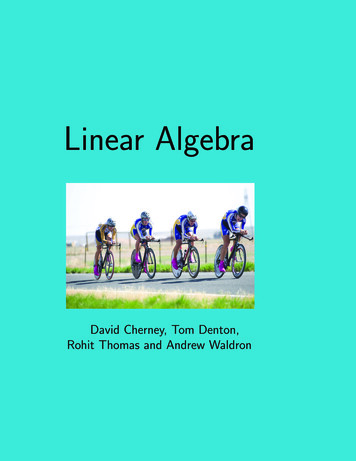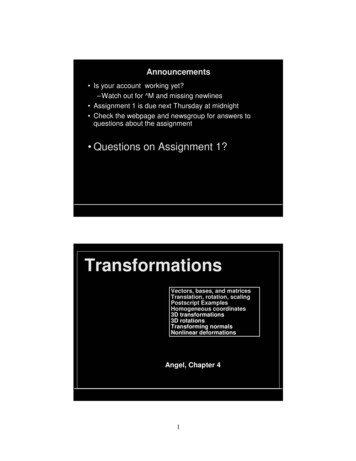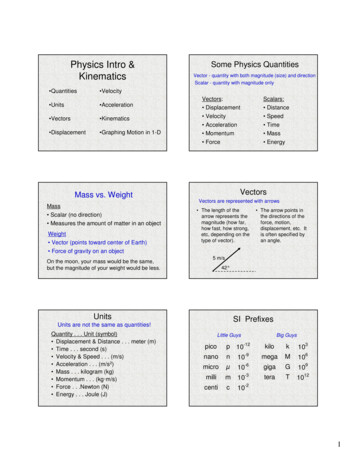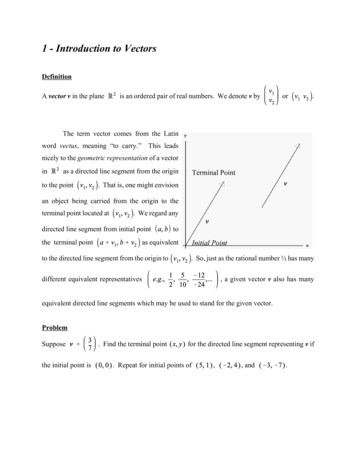
Transcription
1 - Introduction to VectorsDefinitionA vector v in the planeis an ordered pair of real numbers. We denote v byor.The term vector comes from the Latinword vectus, meaning “to carry.”This leadsnicely to the geometric representation of a vectorinas a directed line segment from the originto the point. That is, one might envisionan object being carried from the origin to theterminal point located at. We regard anydirected line segment from initial pointthe terminal pointtoas equivalentto the directed line segment from the origin to. So, just as the rational number ½ has manydifferent equivalent representatives, a given vector v also has manyequivalent directed line segments which may be used to stand for the given vector.ProblemSupposethe initial point is. Find the terminal pointfor the directed line segment representing v if. Repeat for initial points of,, and.
Basic Vector Algebra in1.Vector Equality: Two vectorsand2.andare equal if and only if.Vector Addition: The sum of the vectorsandis defined by.3.Scalar Multiplication: Supposeproduct ofis defined by.ExampleFind the sum of the following vectors.1.,2.3.,,is a vector and. Then the scalar
Solution1.2.3.We illustratein the graphic at the right. As suggested by thegraphic, vector addition may be regardedgeometrically as head-to-tail addition of directedline segments.We may also illustrate the vector sumwithas the diagonal of a parallelogramwith sides determined by the vectors v and u.Problem
1.Find the sum of the following vectors:(a),(b)2.,Illustrate the above sums geometrically.We note that vectors inare simply ordered triples of real numbers of the formorVector addition in, likeor, is componentwise and is defined by.ExampleIn, the sum ofandis the ordered triple or columnvector given byExample.
Compute the following scalar products:1.2.3.Solution1.2.3.Observe that as directed line segments theillustration above suggests that the vectoristimes the length of the vector v andhas the same direction as v if " is positive and the opposite direction is " is negative.Definition
Letbe n vectors inwhere(or). Then any vector of the formare scalars is called a linear combination of.Examples1.2.ExampleGivenif possible, so thatSolution,,, and.in, find scalars,
Since two vectors are equal precisely when corresponding components are equal, the above yieldsthe following system of three equations in three unknowns:or, equivalently,Solving the above system yields a unique solution of. That is,ProblemLetand. Determine if (a)or (b)is a linear
combination of the two-vectors.Question: When is a given vector a linear combination of a particular set of vectors?ProblemLetbe vectors inand.1.What can be said about the set of all vectors of the form2.What can be said about the set of all vectors of the form3.What can be said about the set of all vectors of the form?
Basic Vector Algebra in 1. Vector Equality: Two vectors and are equal if and only if and . 2. Vector Addition: The sum of the vectors and is defined by. 3. Scalar Multiplication: Suppose is a vector and . Then the scalar product of is defined by. Example Find the sum of the following vectors. 1. , 2. , 3. ,
